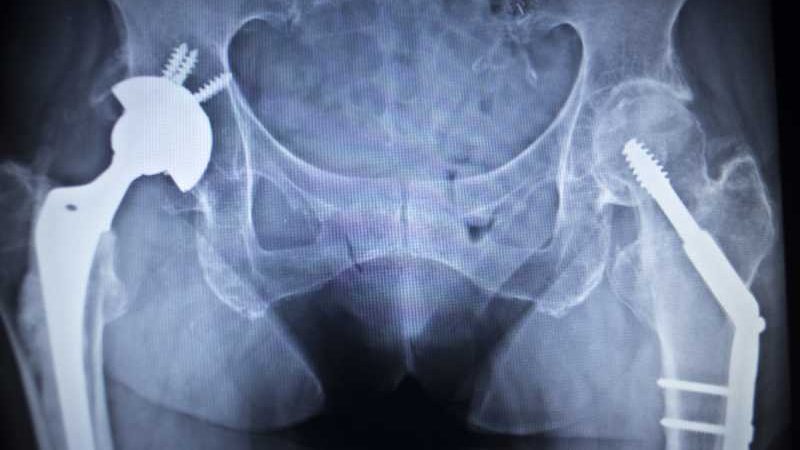Defective
medical devices
Victims who suffer injury or harm from a defective medical device should look into filing a lawsuit using a bad drug attorney. Victims can get justice and compensation as a result of corporate wrongdoing. Simply stated, products cannot be manufactured or designed in a manner that causes harm to others. If defective products are manufactured and cause complications and side effects, those responsible may be held responsible. Victims should learn their legal rights. An informed victim will have a basic understanding of product liability law and how it applies to medical devices.

According to the Restatement (Third) Torts, there are three different theories of recovery for product liability cases. The first is that there was a manufacturing defect. The second is that there was a defect in the design. The third theory is that the manufacturer did not give adequate warnings about the dangers of a product or did not give appropriate instructions on a product’s use. All of these three theories are applicable to injuries caused by medical devices.
Product liability law is unique in that there are many different parties that may be sued beyond just the manufacturer. Any defendant who is judged to be “in the stream of commerce” may be found liable in whole or in part for a plaintiff’s injuries. Essentially, anyone who has had any contact with the product or role in selling it prior to the product reaching the doctor can be liable. If the medical device has been purchased from a store, then that store can be sued. However, if you are looking to sue a doctor or hospital for implanting a defective medical device, that suit must be brought as a medical malpractice suit.
How it works
PROVING
Product LIability

1
The first thing that a plaintiff needs to do when suing under a theory of product liability is to show that the product itself was actually defective. Just because a plaintiff was injured by a product does not automatically mean that it was defective. Proving a defect can occur automatically if it is shown that the product either differs from the manufacturer’s “intended result” or that it differs from the manufacturer’s other products. A plaintiff could also show that the manufacturer was negligent. Of course, the plaintiff must show that there has been no change in the product since it left the manufacturer’s possession. In addition, if a plaintiff can show that a product did not perform as safely as an ordinary customer would have expected or if the inherent risk in the design outweighs the benefits, then they can prove a defect.
If a defect can be proven, then the plaintiff must show that the defect was the actual cause of their injuries. In other words the medical device failure must be the actual cause of the injuries and damages. It does not matter whether the manufacturer was negligent because the defect is proof enough that the manufacturer has done something wrong. In other words, a defect would ordinarily make a manufacturer strictly liable absent intervening factors. Manufacturers can then try to show that they are not liable notwithstanding any defect. For example, the plaintiff could have misused the product. Alternatively, someone else could have had possession of the product between the time of manufacture or purchase and caused the defect. One particular defense that is applicable to the medical devices area of product liability is that the particular risk of harm was neither known nor knowable in light of the scientific knowledge that was available at the time of manufacture. When a plaintiff is able to recover, damages may include lost wages, pain and suffering, medical bills, compensation for injuries as well as punitive damages.
2
3
Oftentimes, these suits ultimately end up being consolidated into a large multi-state class action lawsuit. Many defective medical device lawsuits are filed as multidistrict litigation. Potential plaintiffs should monitor news in their case to find out how to either file a suit or join the class of plaintiffs. We are also litigating Camp Lejeune Contaminated water lawsuits.
Case Studies
In order to best understand how these theories apply to the medical devices field, it is instructive to focus on several of the major products liability cases in this area.

Transvaginal Mesh Litigation
Perhaps the largest medical device litigation of all-time has been the transvaginal mesh litigation. The vast majority of these lawsuits have settled. However, it may no be too late to pursue justice and compensation. Transvaginal mesh was an implant designed to treat certain pelvic disorders and incontinence among women. However, a large percentage of women who received this medical implant have reported being injured. One of the more prevalent injuries has been the mesh cutting through the skin and causing infection. Many women have required multiple rounds of surgeries to deal with the defective mesh. There are four primary manufacturers of the mesh. Each of them have faced numerous lawsuits. Many of these lawsuits have focused on strict products liability. Other suits have alleged that the product was defective or was not tested appropriately and sufficiently. Finally, these manufacturers have been found liable on the grounds that they did not warn physicians of the inherent risks of these products before they sold the products for use. Multimillion dollar verdicts against the manufacturers in these cases have become commonplace. Boston Scientific has faced the most lawsuits in this area with close to 50,000 suits filed against it.

Metal Hip Replacements
Another major medical devices products liability suit has been the litigation surrounding hip replacements. The early hip replacements were manufactured from metal. This caused a condition called metallosis, which can cause swelling, pain and possibly blood poisoning. In retrospect, it seems to be a dangerous idea to install a part made of metal into a patient’s body. Metal has been known to be associated with toxicity. Plaintiffs have alleged that these metal hip replacements are defective, and that manufacturers have failed to warn patients about the risks associated with these implants. The manufacturers have been hit with over 100,000 lawsuits. According to Consumer Reports, one manufacturer, DePuy, paid roughly $2.5 billion to settle 7,000 suits related to it’s defective implant.
Sources and Recommended Reading:
https://lawshelf.com/courseware/entry/liability-and-defenses-to-products-liability
https://www.consumerreports.org/hip-replacement/j-and-j-hip-replacement-lawsuit/
https://www.beckershospitalreview.com/supply-chain/boston-scientific-faces-48k-lawsuits-over-pelvic-mesh-implants-5-things-to-know.html
https://www.legalmatch.com/law-library/article/ultimate-guide-to-product-liability.html
